SEO is a powerful marketing funnel that will help you build awareness and more opportunities to convert potential visitors to leads. Creating a great SEO strategy takes effort and should be backed by data-informed decision-making. Tracking the right metrics is necessary. In this article, we go over the top 10 most important metrics that will help you create a winning SEO strategy.


Why tracking SEO efforts is important?
Setting goals and KPIs should be part of every business decision you make. The same goes for marketing and your SEO efforts. Clear and SMART goals are the fundamental block of every SEO strategy.
To effectively track SEO progress, you should follow specific metrics. We break down ten metrics worth tracking to understand the impact of your SEO efforts.
We will cover:
- Organic traffic
- Keyword rankings
- Total clicks
- Core web vitals
- Indexed pages
- Website health score
- Referring domains
- Organic conversions
- Index coverage reports
- Engagement metrics
According to Semrush Sensor, different industries focus on different metrics. Thus above listed metrics are not sorted by importance.
1. Organic traffic
Organic traffic represents all non-paid clicks that come from search engines. Following the organic traffic trend should give you a good understanding of your SEO strategy performance. If the trend is moving upwards, your SEO efforts are paying off. If the trend doesn’t move up, you should make some changes to your SEO strategy.
How to track organic traffic?
You can track organic traffic with Google Analytics or Google Search Console, but we recommend tracking it with the latter. GSC enables you to exclude brand searches and view organic clicks for non-branded terms in isolation. This ensures that your organic traffic data is not skewed by brand activities.
The next thing to keep in mind when analyzing organic traffic is time. SEO is a marathon and not a sprint. You should compare traffic on a year on a year-by-year basis rather than on a month-by-month basis.

2. Keyword rankings
Ranking for specific keywords is fundamental to every SEO strategy. Keyword rankings refer to a website’s organic positions in the search results. The more relevant the keyword is to your brand, the more valuable it is for good ranking.
How to track keyword rankings?
You can again use Google Search Console to track your keyword rankings. First, select Pages in the performance report following with Queries. You can then see how your pages rank for a specific keyword.
For more precise results you can use one of many third-party SEO tools. The most famous ones are Ahrefs’ Rank Tracker and Semrush position tracking tool. Those tools allow you to monitor the performance of specific keywords over time.
Disclaimer: The problem with third-party tools is that they only track the keywords you put into them. This means you don’t get an overview of all keywords you could rank for. GSC on the other hand automatically ranks every single keyword your website ranks for.
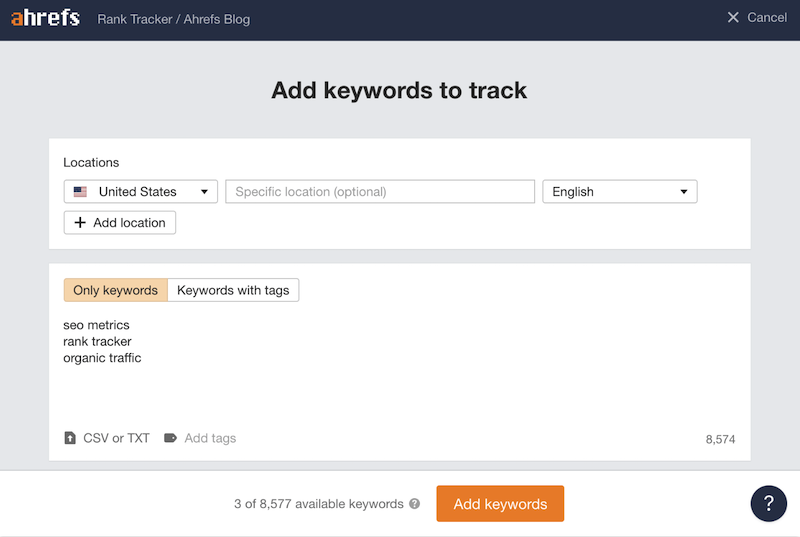
3. Total clicks
The goal of every SEO strategy is to boost your organic traffic. The total clicks report shows how many people clicked on your site in Google’s organic results. Perfect for monitoring your SEO efforts.
How to track total clicks?
Total clicks in the Google Search Console report how many people clicked on your website in Google’s organic results. Total click reports should be one of the most important metrics you should follow. If the number of clicks is increasing, SEO efforts are paying off.

4. Core web vitals
Core web vitals report shows how your page performs based on real-world usage data. It's the Google’s way of tracking your website’s overall user experience.
The report is based on three different metrics:
- Largest Contentful Paint (LCP) - the largest visible element loaded in the viewport.
- First Input Delay (FID) - the time between the first user interaction and website response.
- Cumulative Layout Shift (CLS) - how elements move around / how stable the page layout is.
Google has used Core Web Vitals (CWV) as a ranking factor since 2021. To analyze how users are interacting with your site, Google uses an AI-based RankBrain algorithm. According to Backlinko, RankBrain is currently the third most important ranking signal.
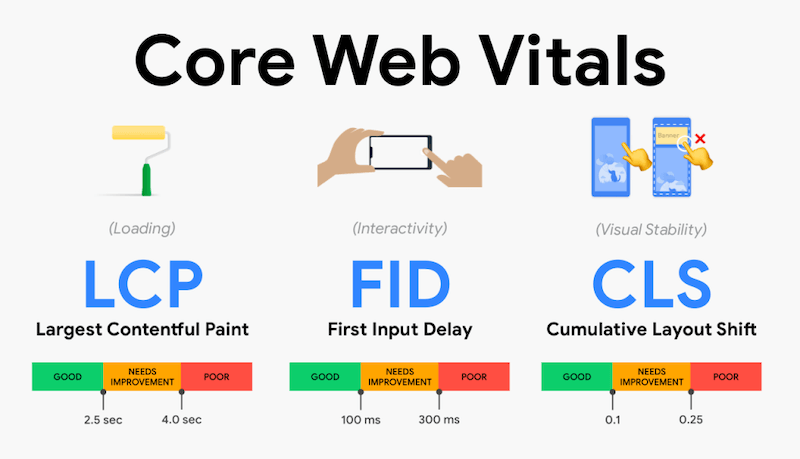
How to track total CWV?
As with most other metrics, you don’t necessarily need to use third-party SEO tools to track CWV. You can simply check it in the Google search console under the Core Web Vitals report.
5. Indexed pages
Indexed pages are one the most underrated metrics according to Backlinko. Indexed pages refer to all your pages that Google has indexed. Those pages have been analyzed for content and meaning and stored in the Google index. Once your pages are indexed, they appear in the Google search results.
How to see how many indexed pages you have?
There are two ways to find this out.
Use the site:yoursite.com operator in Google search. You will receive a rough estimation of how many pages have been indexed. Another way is to use Google Search Console and see the number from the coverage reports.

6. Website health score
The website health score is a specialized metric by Ahrefs. Website health refers to how well your website is performing in terms of speed, security, and uptime. The metric is a reliable score for your overall state of technical SEO and a crucial tool for website optimization.
How to track your website’s health score?
Register for an Ahrefs account and create your first project. Once you add the project to the site audit, the tool with start updating you with the health score regularly.
Every time Ahrefs bot finishes crawling your website, it will update your Health Score and report accordingly. To see the changes in your website errors between crawls, head to the All issues report and select Errors only.
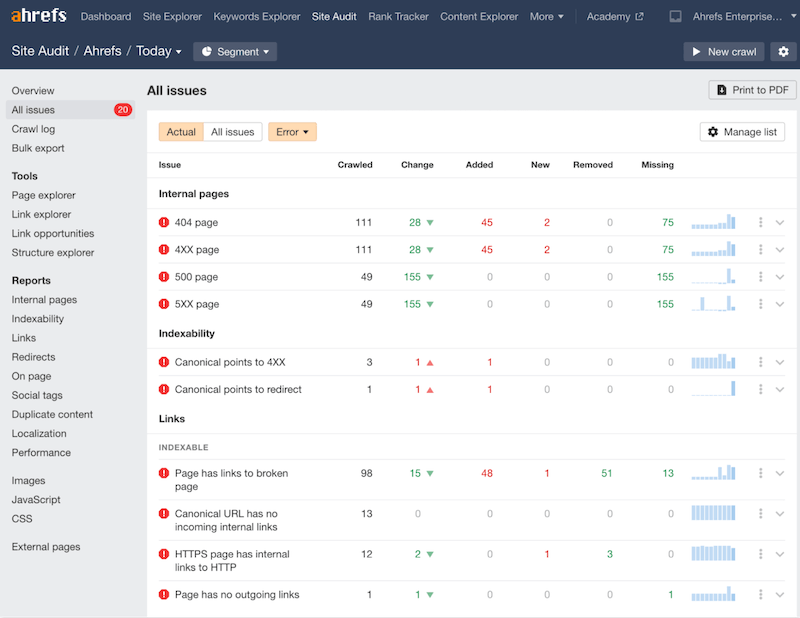
7. Referring domains
Referring domains also known as backlinks are websites that link to your website. Backlinks are considered one of the most important ranking factors since they are the fundamental block of PageRank. PageRank is the foundation of Google’s ranking algorithm.
Referring to Moz: “Backlinks are especially valuable for SEO because they represent a "vote of confidence" from one site to another.”
Backlinks present a signal to search engines that others vouch for your content. The more relevant backlinks you have, the more legit you are.
How to track referring domains?
You can track all your referring domains with Semrush or Ahrefs’ Site Explorer. Keep in mind that not all backlinks are equally good. You need to ensure that only high-quality and relevant domains will refer to your website.
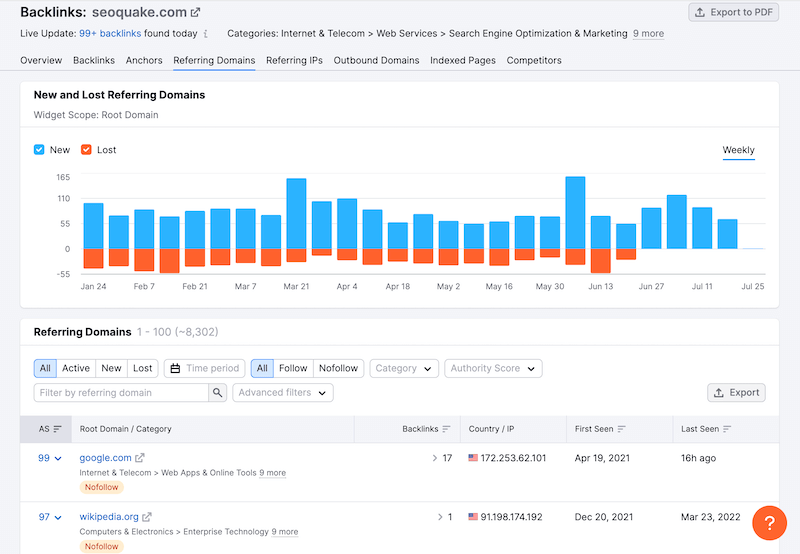
8. Organic conversions
Not all organic traffic is the same quality. Bringing traffic to your website is only the first part of your SEO strategy. Converting those new visitors into leads is the second one.
To measure the quality of your traffic, you should be tracking organic conversions.
How to track organic conversions?
You can track organic conversions in Google Analytics. To track conversion rates, you must first set up your conversion goals. Goals can include:
- Making a purchase.
- Email signups.
- Phone calls.
- Form submissions.
Navigate to conversions in the right panel of your Google Analytics dashboard to set up goals. Continue to overview and set up your goals there.
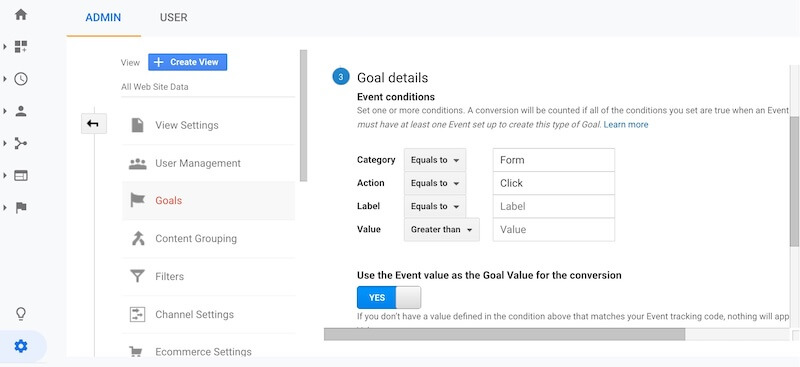
9. Index coverage reports
You should regularly track index coverage reports to stay on top of your SEO strategy. Index coverage reports are all errors that prevent your pages from being indexed.
There is more than one reason why Google de-index your page or indexes them in the first place. Examples of your page not being indexed include:
- Your website is slow.
- Your website is not mobile-friendly.
- Your website loads slowly.
- Your meta tags are set to no-index, nofollow.
- You have a redirect loop.
How to track index coverage reports?
Google Search Console enables you to analyze any coverage issues your site suffers from. Examples of coverage issues include:
- 5xx server errors
- 4xx errors
- Crawl anomalies
- No-index pages
- Crawled—currently not indexed
- Discovered—currently not indexed
- Duplicate, submitted URL not selected as canonical
- Blocked by robots.txt
Clicking on an error will result in a list of URLs being affected. GSC will also provide you with a guide on how to fix the situation.

10. Engagement metrics
Last but not least are engagement metrics that show how users interact with your site. Here we must distinguish between:
- Bounce rate: the number of visitors who left before clicking any links or buttons on your website.
- Time spent on site: The number of time visitors spends on the site on average.
- Pages per visit: The average number of pages users visit before leaving the site.
How to track engagement metrics?
You can track all three engagement metrics with the help of Google Analytics (GA). GA already shows you those metrics among others by default when you open the dashboard.

Conclusion
Knowing how to track and analyze data is a crucial part of every SEO strategy. It is not enough to only follow the metrics but to also understand the why behind them. Understanding the ten metrics listed here will give you a comprehensive insight into your SEO efforts. This will enable you to further develop and optimize your SEO efforts and boost your Google ranking faster.
And if you would like to boost your Weblow site SEO, dive deep into the basics of getting discovered on the web.
Frequently asked questions
Is Google Analytics free?
Yes, Google Analytics is a free tool by Google that helps you understand the activity on your website.
What are SEO KPIs?
SEO KPIs are measurable values used by marketing teams to measure the impact of SEO efforts.
What are the best SEO tools?
Some of the best SEO tools:

















